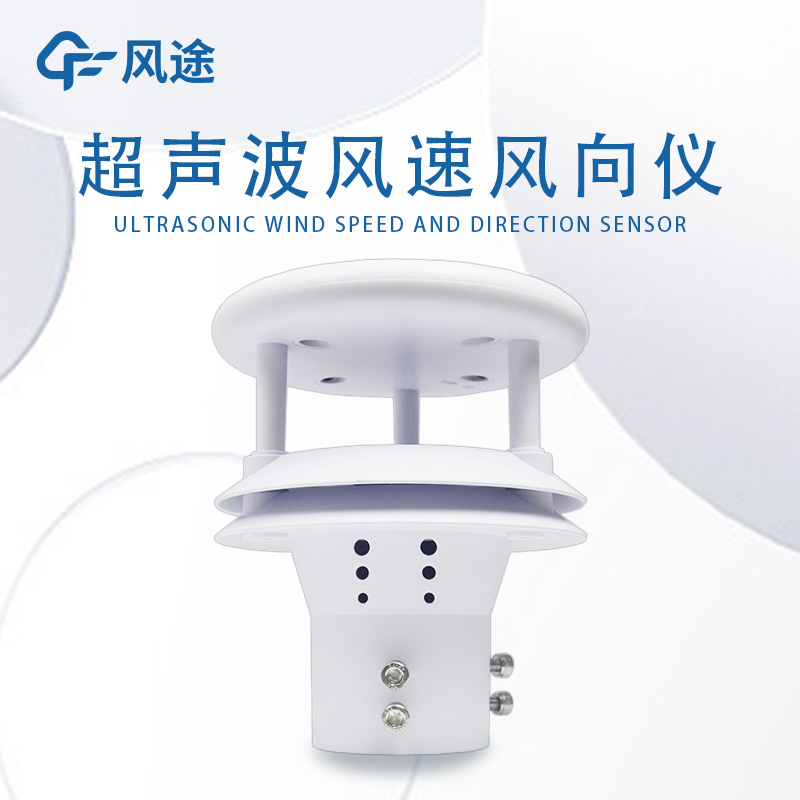Shandong Fengtu IOT Technology Co., Ltd
Sales Manager:Ms. Emily Wang
Cel,Whatsapp,Wechat:+86 15898932201
Email:info@fengtutec.com
Add:No. 155 Optoelectronic Industry Accelerator, Gaoxin District, Weifang, Shandong, China

Sales Manager:Ms. Emily Wang
Cel,Whatsapp,Wechat:+86 15898932201
Email:info@fengtutec.com
Add:No. 155 Optoelectronic Industry Accelerator, Gaoxin District, Weifang, Shandong, China
time:2024-11-15 08:55:54 source:Weather Station viewed:450 time
Although ultrasonic and mechanical wind speed measurement sensors are similar at the basic conceptual level, due to the differences in their designs, their operating modes each possess unique characteristics. Therefore, it is of great significance to clarify the advantages and disadvantages of these two types of anemometers.
Ultrasonic Anemometer
Firstly, ultrasonic anemometers have the advantage of requiring less maintenance and exhibit a more excellent response ability when dealing with rapid gusts. The core difference lies in the fact that ultrasonic anemometers have no moving parts. Specifically, ultrasonic pulses are emitted from the sensor facing north, and the microprocessor is responsible for measuring the time it takes for the pulses to travel to the sensor facing south. The wind speed is then calculated based on the propagation time of the pulses between the two sensors. Factors such as wind speed and direction can affect the measurement time. However, due to the absence of moving parts, the measurement results of ultrasonic anemometers can be obtained instantly and with extremely high precision.
Mechanical Wind Speed Measurement Sensors
In contrast, mechanical wind speed measurement sensors have moving parts, including the cups used to detect wind speed and the wind vane used to determine vector changes. Whenever the wind direction changes, these parts will correspondingly produce physical movements to ensure the accuracy of the speed and direction readings. Although in terms of long-term measurement results, the precision of mechanical wind speed measurement sensors is roughly the same as that of ultrasonic anemometers, mechanical sensors have limitations due to the existence of moving parts and are not always able to effectively detect situations such as gusts and turbulence.
Comparison in Actual Observation
During the process of wind speed measurement, since mechanical sensors require a certain amount of time for physical startup and to record changes in wind direction, this leads to differences in the measurement results. For example, when encountering a storm with rapidly changing wind directions, the sensors in a mechanical anemometer need to first decelerate, stop, and then restart as the wind direction changes. It often takes several seconds to complete the recording and reporting of the change in wind direction. However, ultrasonic anemometers are able to immediately measure the change in wind direction.

Most of the new energy research and development work is actually carried out in a relatively open environment, especially for wind and solar energy research and development, often due to the installation of the environment is very open caused by some important devices are easily affected by changes...
Introduction to ultrasonic wind speed sensors, there are many ways to measure wind speed, but not many with high accuracy. Using the ultrasonic principle to measure wind speed is a very popular trend in recent years, and also based on this principle, ultrasonic wind speed sensors have appeared on th...
How to use a Propeller flow meter?When using a Propeller flow meter, first, check the appearance of the instrument for any damage. Ensure that the battery has sufficient power and check the calibration certificate. Calibrate the instrument if necessary. Then, carefully install the propeller on the s...
A wind speed and direction sensor is a device used to measure and record wind speed and direction information, which is widely used in meteorology, aviation, marine, agriculture and other fields. In these fields, accurate wind speed and direction information is of great significance for forecasting...